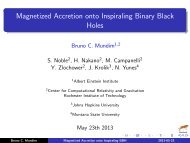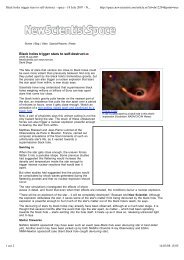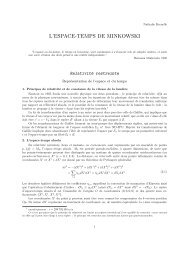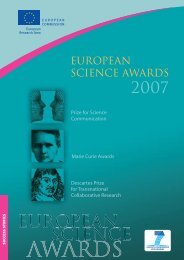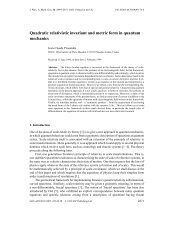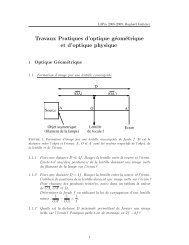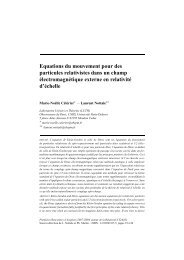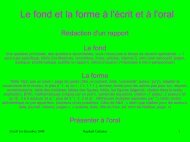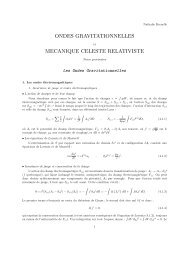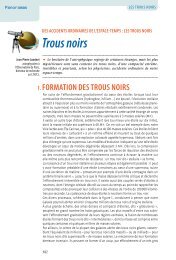Equation of state for compact stars Lecture 1 - LUTh
Equation of state for compact stars Lecture 1 - LUTh
Equation of state for compact stars Lecture 1 - LUTh
You also want an ePaper? Increase the reach of your titles
YUMPU automatically turns print PDFs into web optimized ePapers that Google loves.
Electrons - continued<br />
The strength <strong>of</strong> the electron Coulomb interaction in a plasma <strong>of</strong> nondegenerate<br />
electrons can be characterized by the electron Coulomb coupling parameter<br />
Γe = e2<br />
aekBT<br />
≈ 22.75<br />
T6<br />
<br />
ρ6<br />
Z<br />
A ′<br />
1/3 , (8)<br />
where T6 ≡ T/106 K. We shall use this parameter Γe <strong>for</strong> any plasma conditions<br />
though Γe has no transparent physical meaning <strong>for</strong> degenerate electrons.<br />
For further use, it is convenient to introduce the electron plasma temperature<br />
Tpe = ωpe/kB ≈ 3.300 × 10 8 <br />
xr βr K . (9)<br />
where βr = vF/c and electron plasma frequency is given by<br />
ωpe = 4πe 2 ne/m ∗1/2 e<br />
Here, m ∗ e ≡ ɛF/c 2 = meγr is the effective dynamical mass <strong>of</strong> an electron at the<br />
Fermi surface. Perturbations <strong>of</strong> electron density oscillate with a frequency ωpe - see Landau & Lifshitz Stat. Phys. 1, Physical Kinetics<br />
(10)<br />
Pawe̷l Haensel (CAMK) EOS <strong>for</strong> <strong>compact</strong> <strong>stars</strong> <strong>Lecture</strong> 1, IHP Paris, France 10 / 54



